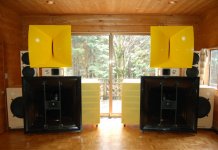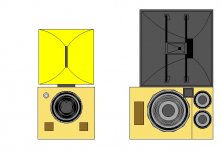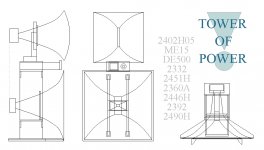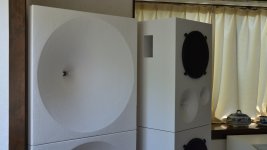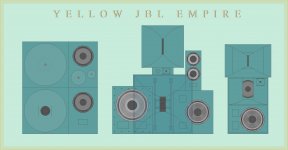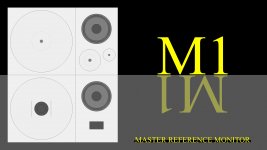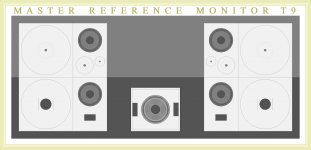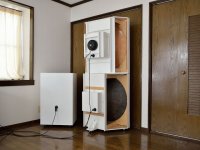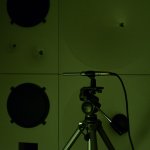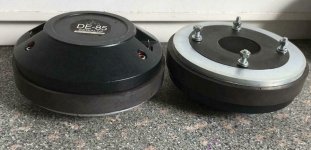Also, there are MEH on the market with measurements and testing already done that are usable from 250Hz.
Red Spade Audio PSE-144
I can buy just the HF section? Or are you suggesting to copy this? Whats MEH stand for anyway. If I can get more extension out of the horn, I could remove a driver from between the horn and the 18" and it will be even more point source. It would be awesome to cross at say 130hz.
And I really enjoyed your reviews of the Dutch&Dutch 8c and Kii Three, that I read only recently. Two of the most comprehensive loudspeaker reviews ever.
Big thumbs up!
Part of the 594A's secret sauce, still not fully decomposed after 85 years:
Cheers!
Yep I'm familiar with the origin of Duralumin, its applications and the Japanese successor: (Extra) Super Duralumin.
If you add elements to your alloy, you increse its mass.
I can buy just the HF section? Or are you suggesting to copy this? Whats MEH stand for anyway.
Paul did sell only horns as i remember.
Red Spade Audio: PSE-144 launch update
If I can get more extension out of the horn, I could remove a driver from between the horn and the 18" and it will be even more point source. It would be awesome to cross at say 130hz.
I'm not sure that there is a listening or measuring distance from where you'd be able to determine it is not point source when looking at PSE-144.
Last edited:
I've seen this horn before but I never separated it from the woofer I seen it with. I wonder what the cost is, sound quality, and range is. You don't think I could build something like that myself with the horn we are designing. If I remember correctly, if I'm only looking to come in around 300hz, with a hole in each of the 4 corners of the horn, as far from the throat as possible....easy peasy?
Camplo,
Afaik Cowanaudio was part of the team which helped to develop the redspade design ( but i may be wrong about it). Ask him directly.
Afaik Cowanaudio was part of the team which helped to develop the redspade design ( but i may be wrong about it). Ask him directly.
mitchba, where can I find your Kii Three review? Kii sounded great at the show, and I'm interested.
Paul Spencer of Red Spade Audio designed it, it is really quite expensive as it is fibreglass construction and is a Celestion 1747 1" CD and 4 x Celestion sealed back mids in an elliptical waveguide.
The similarity is that the mids go down to around 300Hz to cross over to a 15" or 18" woofer.
Red Spade Audio PSE-144
The person I sold my Linkwitz LX521 system to has one, he liked it but was still on the hunt for something better.
The similarity is that the mids go down to around 300Hz to cross over to a 15" or 18" woofer.
Red Spade Audio PSE-144
The person I sold my Linkwitz LX521 system to has one, he liked it but was still on the hunt for something better.
mitchba, where can I find your Kii Three review? Kii sounded great at the show, and I'm interested.
Not mitch but here it is
Kii THREE Loudspeaker Review
Search the site for mitch's other reviews well worth reading.
.... You don't think I could build something like that myself with the horn we are designing. If I remember correctly, if I'm only looking to come in around 300hz, with a hole in each of the 4 corners of the horn, as far from the throat as possible....easy peasy?
It is not just hole in the horn. Size of the holes matters as well as phase plug that goes toward the cone of the midrange to fill the cavity made by the cone bolted to the horn.
It can certainly be done (Paul did it looking at Tom Danley's synergy) but not without some scrap pieces and prototypes.
There are lots of examples of M.E.H.(multiple entry horns) now, though not all that many using a 2-way approach.That is easily the simplest solution to the problems stated herein. Very nice idea. Any of something like this that you could show?
Sometime during 2014, Chris (Cask05 here on DIY) followed some suggestions in this thread:
Pros and cons of different midbass horns
And added 15” drivers to his Klipsch 402 horns resulting in much better polar response than the usual easy to build straight walled conical expansions typically used for DIY MEH.
He later used coaxial compression drivers on the same horn for even better response:
A K-402-Based Full-Range Multiple-Entry Horn - Technical/Modifications - The Klipsch Audio Community
It seems kiiro is finally settling for a M2 (waveguide) inspired setup.
He calls it a paradigm shift.
He calls it a paradigm shift.
Attachments
Last edited:
And some construction pics.
Attachments
-
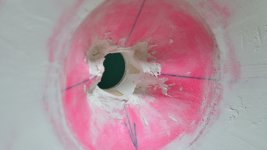 DSC_6885_033.JPG227.2 KB · Views: 153
DSC_6885_033.JPG227.2 KB · Views: 153 -
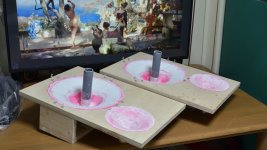 DSC_6880_031.JPG362.4 KB · Views: 144
DSC_6880_031.JPG362.4 KB · Views: 144 -
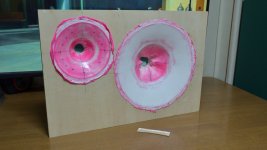 DSC_6868_026.JPG290.5 KB · Views: 143
DSC_6868_026.JPG290.5 KB · Views: 143 -
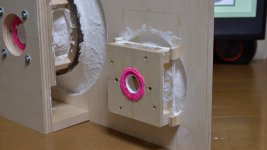 DSC_6855_021.JPG271 KB · Views: 145
DSC_6855_021.JPG271 KB · Views: 145 -
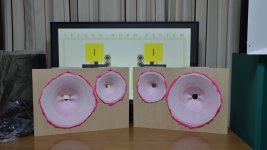 DSC_6837_017.JPG283.8 KB · Views: 152
DSC_6837_017.JPG283.8 KB · Views: 152 -
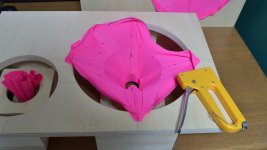 DSC_6835_016.JPG282.7 KB · Views: 139
DSC_6835_016.JPG282.7 KB · Views: 139 -
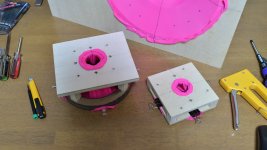 DSC_6832_014.JPG338.5 KB · Views: 123
DSC_6832_014.JPG338.5 KB · Views: 123 -
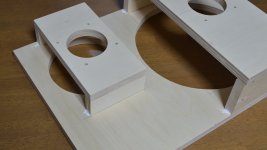 DSC_6830_012.JPG282.6 KB · Views: 118
DSC_6830_012.JPG282.6 KB · Views: 118 -
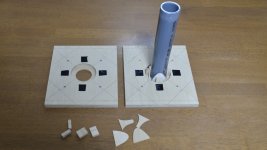 DSC_6824_008.JPG310.6 KB · Views: 162
DSC_6824_008.JPG310.6 KB · Views: 162 -
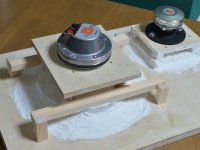 DSC_7225_052.JPG432.8 KB · Views: 174
DSC_7225_052.JPG432.8 KB · Views: 174
Last edited:
Pretty impressive pieces of work, right?
This is his website and here's his old blog. There's lots of interesting info to be found.
A comment (google translated):
"The sound of the two horns (2451H, 2431H) of the M2 type was a clearer new sound, while maintaining the high freshness of the 2360A and MR94.
2360A and MR94 are horns 45 years ago, so I think this is inevitable.
J2 technicians may not have heard of the M2 type large format horn.
Probably one of the world's most advanced large horns.
This is his website and here's his old blog. There's lots of interesting info to be found.
A comment (google translated):
"The sound of the two horns (2451H, 2431H) of the M2 type was a clearer new sound, while maintaining the high freshness of the 2360A and MR94.
2360A and MR94 are horns 45 years ago, so I think this is inevitable.
J2 technicians may not have heard of the M2 type large format horn.
Probably one of the world's most advanced large horns.
Attachments
Last edited:
- Home
- Loudspeakers
- Multi-Way
- Is it possible to cover the whole spectrum, high SPL, low distortion with a 2-way?

